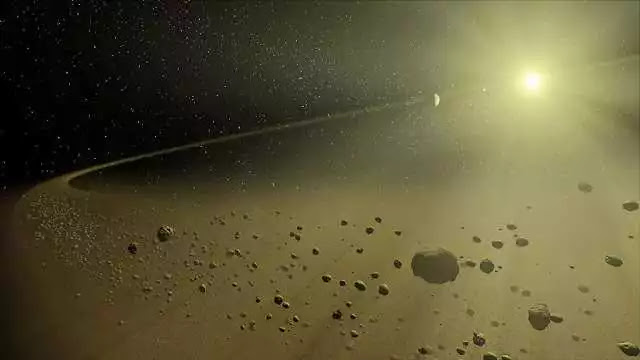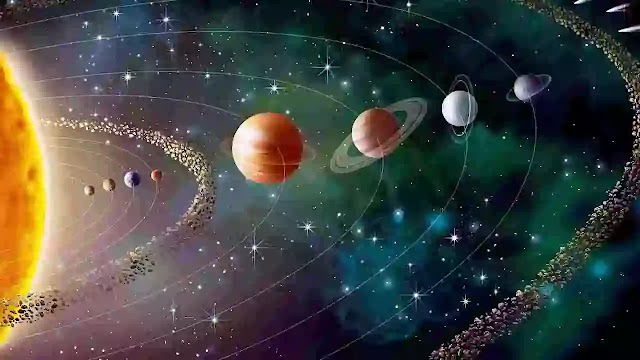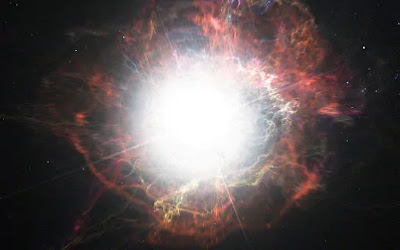Birth History of Our Solar System
Birth History of Our Solar System
Welcome to my blog, "Astronomy knowledge point".
As we look around our own solar system, we need to keep in mind some of the features that we'd like to forget.
To begin with, it all revolves around the Sun in the same direction. That is, if you look at the surface area of the solar system, for example, from the above, all of the world around us and would be rotating counter-clockwise around the Sun. However, there are a few exceptions to these rules are simple, and sometimes it seems that, on a whim, that it is moving clockwise, when viewed from above. Otherwise, yeah, all of which are rotating in the same direction.
Another thing to keep in mind is that if you look at the planets in our solar system, " says the orbit of Neptune, you'll find that all those planets revolving around the Sun in approximately the same plane, that is, in fact, what we call the ecliptic. However, the Neptune's, as you can see, it has an abundance of highly inclined objects. These are the dwarf planets, and Kuiper belt objects, and so on. They seem to be slightly tilted above and below the plane of the ecliptic, and so on, we are going to make a model of the solar system, it is very important that we look at the renders of what we see today.
 |
| Source:- NASA/R. Hurt, JPL-Caltech/C. Lisse, JHUAPL / Public domain |
Astronomers have a pretty good guess as to how our system can be formed. We believe that in our own solar system is made by a cloud, which you can see here.
For a time, there was a spinning disk, a rom, a rally around the protosun, which is depicted in the center of the city. The internal drive has become a little unstable. The album was shattered, and the formation of lumps on the inside, which gives rise to the key to the formation of the planet we live on. And in these protoplanetary disks are very common, you can select different rings and spokes, these are the characteristics of this one. So, this is important, because it means that, in the protoplanetary disk, the protoplanet is starting to sweep away the accumulations of gas and dust in space.
So, that's where we have to assume that there are a number of items around the solar system, namely, the worlds, the giants, and the mass of the space group. The world of the giants, are usually made of lightweight material, which we call the fugitive. For example, the dry ice is frozen carbon dioxide, and the freezing of the most. So, we're going to have a lot of light materials, such as hydrogen. helium, nitrous oxide, methane, and chlorofluorocarbons (cfcs) are cool enough to transform into ice. It is for this reason that this planet has a relatively low density. However, the location in the plane of the groups, on the other hand, has a relatively light elements, mostly consisting of rocky, or fire-resistant material. Thus, the minerals olivine, and so on.
Why are these two types of planets are so much different in composition?
The response to the formation of the planets. Please remember that all of this was going on inside the disk, as you can see
So, if we look at it in the proto solar system, we're going to have an abundance of refractory material from the proto solar system to the very edges of the sheet. There are many silicates, many of carbonate minerals, etc., But only when and where it is going, say, the orbit and closer to the orbit of Jupiter, the temperature drops sufficiently low, the volatile substances could condense. Water, hydrogen gas, etc, in other words, they do not freeze. They're solid enough, or at the very least the slushy enough to complete the condensate, and in fact, if you are entering the orbit of Saturn, the temperature is low enough, it is also highly volatile species such as those of the hydrocarbons, methane, ammonia, etc., to even begin to condensation. Therefore, the point at which the temperature falls low enough, which is called the "frost line". In fact, it is just the distance in which the temperature is low enough so that the volatile components can condense.
why is the tiny and rocky planets, the places, the sun, the views, and huge gas and ice giants are after?
That is, the temperature difference. Only the outer solar system could occur, and this is a big planet, as they are abundant, as well as the refractory and volatile components. However, in the solar system, where I used to live on this planet, there are places in the groups, the only fire-retardant materials, and you will be able to build off of them. So, how to make a rotating disk of gas and dust, go to the planets? What is possible, so that we can think of it, we have to change our point of view. We are penetrating deep inside of the circumstellar disk, instead of thinking that the album as a whole, we need to change our scale, and become smaller, until we are finally getting to the scale of individual stars.
For these particles, the dust is going to be the of the planets. This is how they do it?
First of all, the dust is not the same type of particles, the dust of them, and we think that we have it in our room and the house. Dust in space, is mostly made up of silicate and chondrites, while the dust in the room, it is made up of dead skin cells, insect feces, and so on. What is possible is because there are not a few people or for the insects of the space, and we found ourselves in a bit of a different approach to dust. Yet, these are small particles, dust, in fact, carry an electric charge, and, at the same time, as the particles of dust and dirt to conduct electrical charges in, and cling to each other in order to be the dust bunnies, but also of the particles; they are the cosmic dust bunnies. In fact, they can grow to be quite large, and they're about as exposed to the light of the collisions, which will allow them to develop into a crack, and then up at the edge of the cliff. Nothing is more solid, or to quickly blown up, and if it weren't for all the bits and pieces, but it is, at the very least, all of which are growing, and they are much heavier, more powerful, more collisions will have to grow to what is now called the planetesimals".
Planetesimals: "the planetesimals, is about half a mile in size, they are wide enough to show a force of attraction on each other. This means that they can withstand a heavier collisions, and, in fact, that today we are seeing that the remaining planets around the solar system. These are the modern planets, comets, and Kuiper belt objects.
 |
| Source:- The original uploader was 1981willy at English Wikipedia. Later versions were uploaded by WilyD at en.wikipedia. / Public domain |
These are the planets that are in the face of a kind of a demolition derby for the proto solar system. Most of the people are ruined, and then fused to the other planets. And the most powerful ones are the planets right now, there are protoplanets. They are starting to clean up their tracks. Alternatively, you can use a simple computer simulation, so much so, that we're here, and you can easily see that, at least when the number of objects collide with each other, and there are fewer and fewer of them left. As we look to the future, as the TW Hydrae system, and we really see that this is a ring. Yes, we are able to see how these bands are carved out of the protoplanets within the drive.
So, in order to return to the fumes, keep in mind that the form of a small disk in the a drive. Keep in mind that they are formed far away from the freezing of the line, where there is a large number, as well as the fire element, which is volatile, so they have all of it. They are, sometimes, simply on the basis of the additional planets, because they have more weight. Because they are real protoplanets themselves, and that they are able to gather the volatile compounds. Don't forget that they are still protostars, as there is still no heat, no much wind, and, first of all, there are even more volatile components. Thus, an accretion disk forms around the protoplanet. There seems to be a disk drive in a disk, and even months, to develop in its accretion disk protoplanets, and this is a massive protoplanet in the outer solar system is developing, let's say, the "pre-settings".
The primary atmosphere, means that the atmosphere of Jupiter and Saturn, for example, with them in the same environment in which they are, to a large extent, is formed.
But, in the solar system, which are inner protoplanets, the situation is quite different. They can, in order to preserve this primary atmosphere of the place. Don't forget that the temperature of the closest to the proto star, or in this case, the protosun, is very high. The hot gases will always move faster than cold ones, so if you have a low-mass planet in a low-mass state, they can easily reach the escape velocity of the emissions. Keep in mind that they are the hotter, the faster they are moving. They are close to, and protosun. This means that the protosuns is much stronger than that of the stars, and the wind is making it very difficult to keep to themselves, but also the volatile compounds, which protoplanets that easy. Some protoplanetary the inner parts of the solar system, the atmosphere, simply are not going to be blown away by the solar wind of Sun. However, in the solar system and beyond, there are many small items that are floating around. And while it's a small planetesimals from the outer solar system, the fall of the Proto-Earth, they make such a volatile substance. And the planet has already volcanism.
so now we're going to live in a secondary atmosphere. For example, if a four-and-a-half billion years ago, the warmth of the Earth was just a volcano; every surface was covered in volcanism, and some traces of volatile matter from the Earth, its origin, was quickly released by volcanism. The comets, and the planetesimals would have been supplied the additional volatile components of the outer solar system, and the climate in which we live in today, is a second-atmosphere version of the Earth's atmosphere is 2.0. Imagine that, during the whole of this period, we may have to imagine that, as a rotating disk, and a small clump of material is formed on the inside of these dishes. After that, there's going to be, planets, and even the protoplanets. We protoplanets are going to start to turn in their orbits around the Sun, passes through the last of the intermittent stage of its formation. Protoplanets began to draw it up, and sweep their orbits, and thus, to clear the way, of which our solar system that we live in today.



Comments
Post a Comment